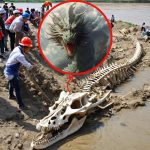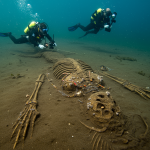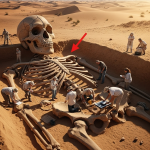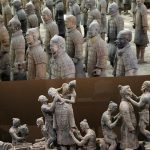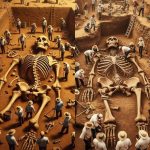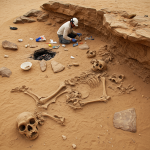Mysterious Elite Burial Unearthed at Teotihuacan: 1,600-Year-Old Skeleton with Elongated Skull Stuns Archaeologists
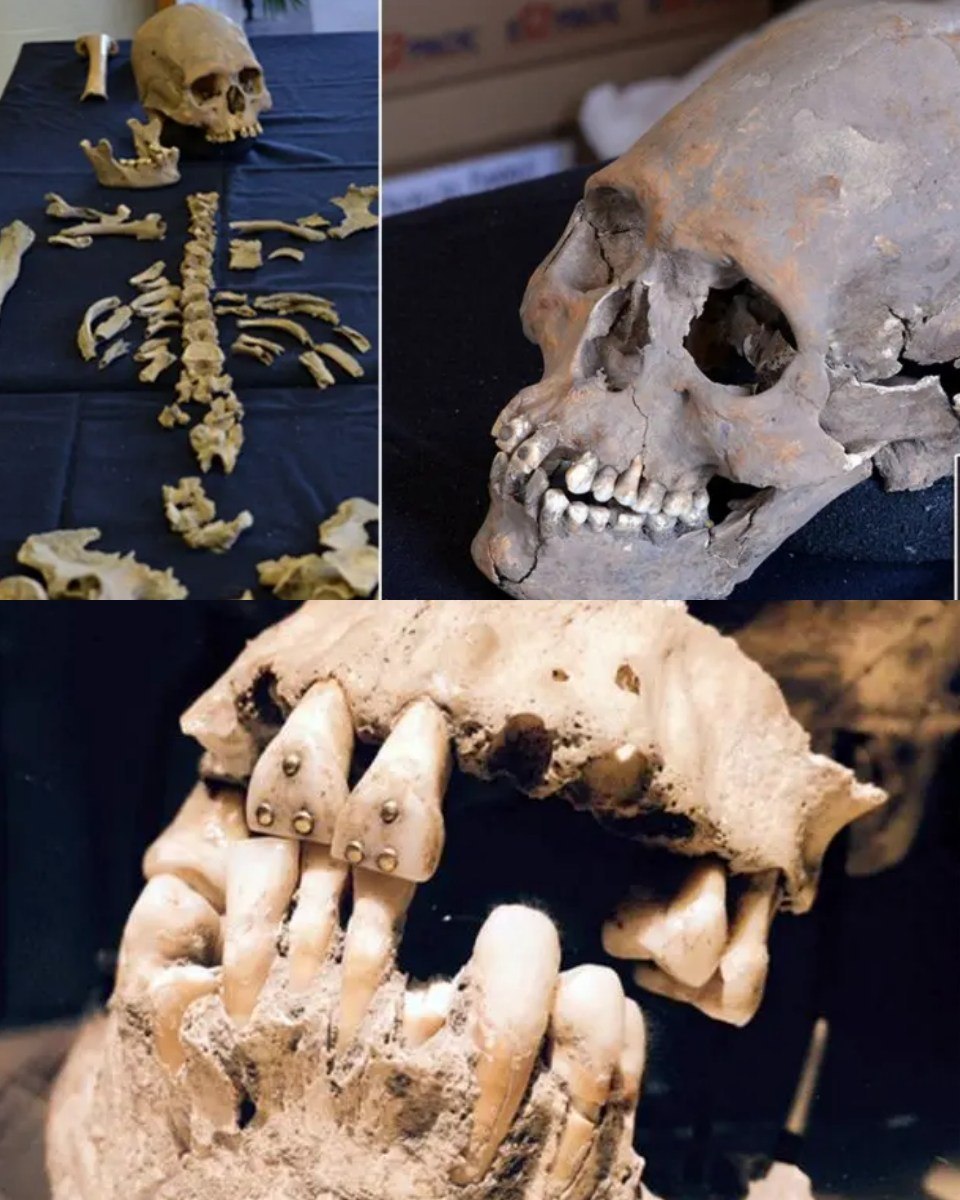
In a remarkable discovery at the ancient ruins of Teotihuacan, Mexico, archaeologists have unearthed a 1,600-year-old burial that has captivated the global archaeological community, announced on July 5, 2025. The skeleton, identified as belonging to an upper-class woman, features an intentionally elongated skull, teeth embedded with decorative stones, and a striking prosthetic tooth crafted from serpentine, a vibrant green stone. Buried with 19 intricately designed offering jars, the find, located near the Pyramid of the Moon, suggests a woman of significant status within this enigmatic pre-Columbian civilization, flourishing between 100 BCE and 650 CE. The elaborate burial and unique cranial modification raise profound questions about Teotihuacan’s social hierarchy, cultural practices, and possible connections to other Mesoamerican societies, prompting speculation about whether this woman was a priestess, noble, or revered figure whose legacy was immortalized in this extraordinary tomb.

Preliminary analysis of the skeleton reveals sophisticated body modification practices, with the elongated skull achieved through cranial binding in infancy, a technique associated with elite status in Mesoamerican cultures like the Maya and possibly adopted by Teotihuacan’s ruling class. The stone-embedded teeth, adorned with circular inlays, and the serpentine prosthetic tooth indicate advanced dental craftsmanship and access to rare materials, underscoring her high social standing. The 19 offering jars, some containing traces of organic materials and adorned with intricate carvings, suggest a ritualistic burial tied to spiritual beliefs about the afterlife, possibly linked to the worship of deities associated with fertility or the cosmos. Radiocarbon dating confirms the burial dates to around 400 CE, aligning with Teotihuacan’s peak as a cultural and economic powerhouse. While some X posts speculate about extraterrestrial influences due to the skull’s unusual shape, mainstream researchers dismiss such claims, focusing instead on cultural parallels with cranial deformation practices in other ancient societies, urging further isotopic and DNA analysis to trace her origins and diet.

The global reaction to this elite burial has been electrifying, with images of the elongated skull and serpentine tooth flooding social media, drawing comparisons to similar finds in Peru and sparking debates about Teotihuacan’s mysterious decline. Enthusiasts point to myths of divine rulers or star-beings in Mesoamerican lore, while scholars emphasize the find’s potential to illuminate the city’s social structure and trade networks, given serpentine’s rarity in the region. Archaeologists are employing advanced techniques like 3D imaging and chemical analysis to study the skeleton and artifacts without damage, though restricted access to the site, due to its cultural significance, has fueled public curiosity and conspiracy theories. The logistical challenges of preserving the delicate remains and jars in Mexico’s humid climate are significant, yet the discovery’s impact is undeniable. As researchers unravel the secrets of this upper-class woman’s life and death, the burial stands as a haunting testament to Teotihuacan’s grandeur, urging humanity to rethink the sophistication and mysteries of this ancient civilization.


